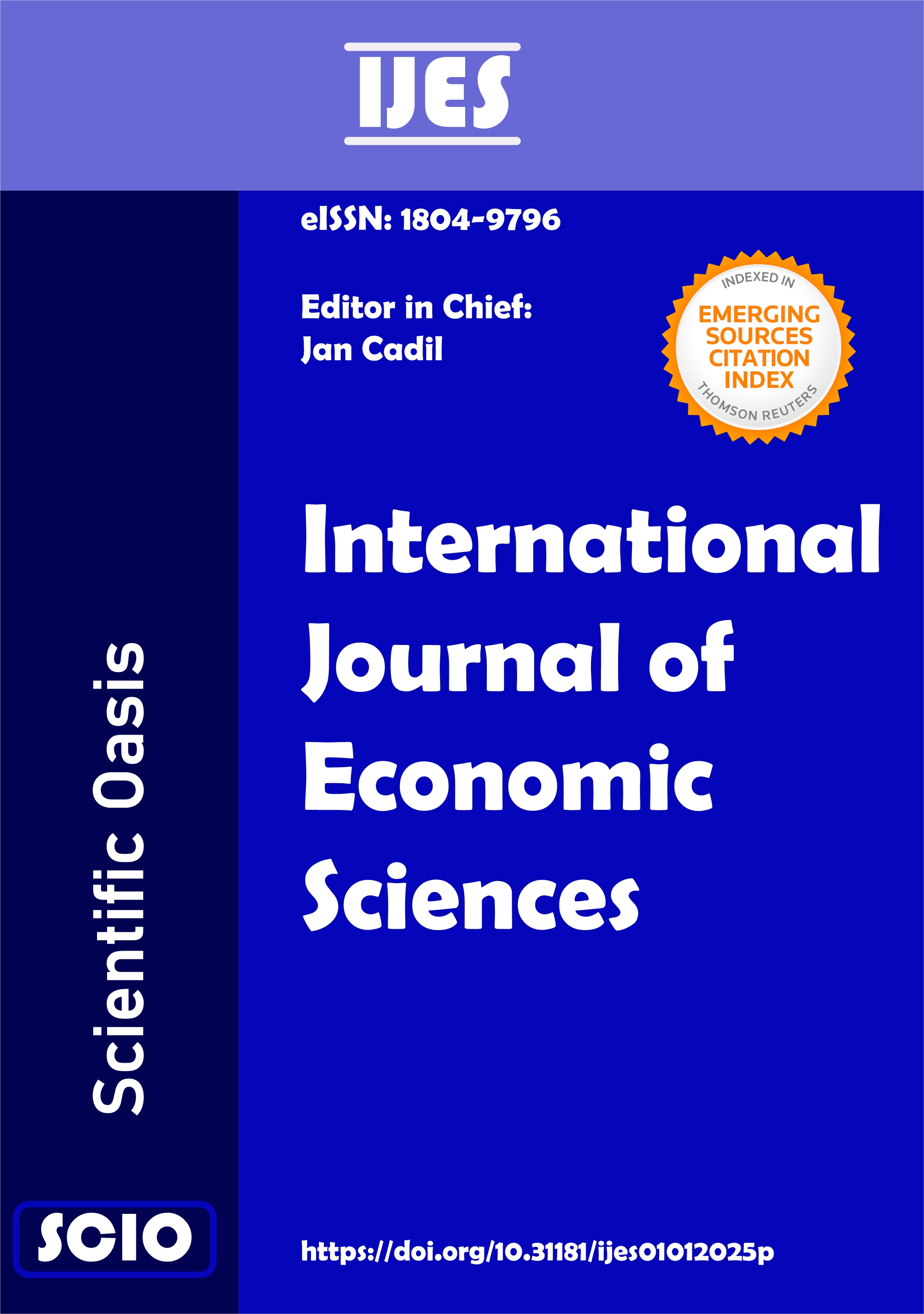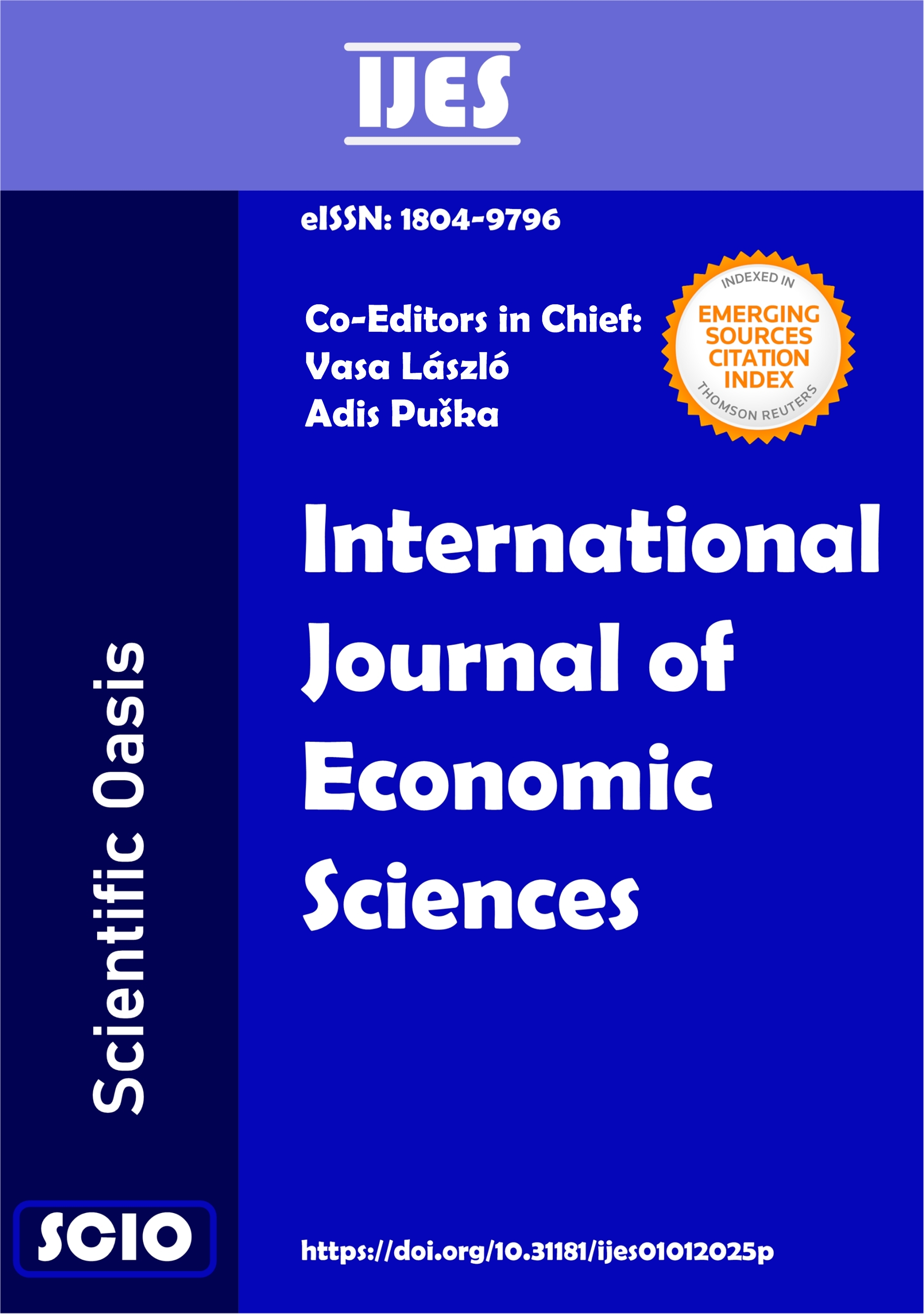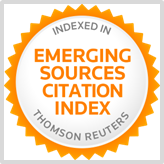Beyond ESG: Unpacking Brand Loyalty Through the Emotional Mechanisms Lenses of Attachment and Love—A Hierarchical Regression Study of Alibaba in China
DOI:
https://doi.org/10.31181/ijes1412025195Keywords:
ESG, Brand attachment, Brand follow, Brand love, Personal sustainabilityAbstract
Currently, research on Environmental, Social, and Governance (ESG) initiatives primarily emphasizes consumers' cognitive evaluations—such as awareness, knowledge, and rational assessment—providing a limited perspective on the underlying mechanisms that drive brand loyalty. However, the internal structural pathway between ESG and brand loyalty remains underexplored, particularly with regard to emotional mechanisms. This study addresses that gap by examining how ESG perceptions influence brand loyalty through the sequential mediating roles of brand attachment and brand love. The research moves beyond cognitive frameworks to uncover the emotional pathways through which ESG initiatives shape consumer behavior. Using survey data, the study applies hierarchical regression analysis alongside a sequential mediation model to assess the emotional effects of ESG perceptions. The findings reveal that the environmental and social dimensions of ESG are especially effective in fostering emotional bonds with consumers. ESG efforts serve as credibility signals, evoke emotional responses, and fulfill consumers' intrinsic needs for connection and attachment. The study concludes that ESG is not merely a tool for regulatory compliance or corporate image management, but a strategic resource for cultivating long-term consumer loyalty through emotional engagement. By integrating theories of signaling, consumer emotion, and emotional attachment, this research offers a comprehensive framework for understanding the emotional impact of ESG on consumer–brand relationships. The results provide practical insights for brands seeking to strengthen loyalty by aligning ESG initiatives with consumers' emotional values and expectations.
Downloads
References
Ahuvia, A. (2005). Beyond the extended self: Loved objects and consumers' identity narratives. Journal of Consumer Research, 32(1), 171–184. https://doi.org/10.1086/429607 DOI: https://doi.org/10.1086/429607
Ajzen, I. (1991). The theory of planned behavior. Organizational Behavior and Human Decision Processes, 50(2), 179–211. https://doi.org/10.1016/0749-5978(91)90020-T DOI: https://doi.org/10.1016/0749-5978(91)90020-T
Albert, N., Merunka, D., & Valette-Florence, P. (2008). When consumers love their brands: Exploring the concept and its dimensions. Journal of Business Research, 61(10), 1062–1075. https://doi.org/10.1016/j.jbusres.2007.09.014 DOI: https://doi.org/10.1016/j.jbusres.2007.09.014
Almeyda, R., & Darmansya, A. (2019). The influence of environmental, social, and governance (ESG) disclosure on firm financial performance. IPTEK Journal of Proceedings Series, 5(1), 278–289. https://doi.org/10.12962/j23546026.y2019i5.6486 DOI: https://doi.org/10.12962/j23546026.y2019i5.6340
Bae, G.-K., Lee, S.-M., & Luan, B.-K. (2023). The impact of ESG on brand trust and word of mouth. Sustainability, 15(5), 2348. https://doi.org/10.3390/su15052348 DOI: https://doi.org/10.3390/su15032348
Bambauer-Sachse, S., & Rabeson, L. E. (2015). Service recovery for moderate and high involvement services. Journal of Services Marketing, 29(5), 331–343. https://doi.org/10.1108/JSM-02-2014-0053 DOI: https://doi.org/10.1108/JSM-05-2014-0155
Batra, R., Ahuvia, A., & Bagozzi, R. P. (2012). Brand love. Journal of Marketing, 76(2), 1–16. https://doi.org/10.1509/jm.09.0339 DOI: https://doi.org/10.1509/jm.09.0339
Bhattacharya, C. B., & Sen, S. (2003). Consumer-company identification: A framework for understanding consumers' relationships with companies. Journal of Marketing, 67(2), 76–88. https://doi.org/10.1509/jmkg.67.2.76.18609 DOI: https://doi.org/10.1509/jmkg.67.2.76.18609
Bhattacharya, C. B., Rao, H., & Glynn, M. A. (1995). Understanding the bond of identification. Journal of Marketing, 59(4), 46–57. https://doi.org/10.2307/1252323 DOI: https://doi.org/10.1177/002224299505900404
Bian, X., & Haque, S. (2020). Counterfeit versus original patronage: Emotional brand attachment and brand involvement. Journal of Brand Management, 27(5), 438–451. https://doi.org/10.1057/s41262-020-00189-7 DOI: https://doi.org/10.1057/s41262-020-00189-4
Bidmon, S. (2016). How does attachment style influence the brand attachment–brand trust and brand loyalty chain? International Journal of Advertising, 35(5), 713–735. https://doi.org/10.1080/02650487.2015.1087077
Bowlby, J. (1969). Attachment and loss: Vol. 1. Attachment. Basic Books. https://doi.org/10.4324/9780203758045 DOI: https://doi.org/10.4324/9780203758045
Carfora, V., et al. (2019). Explaining consumer purchase behavior for organic milk. Food Quality and Preference, 71, 163–171. https://doi.org/10.1016/j.foodqual.2018.07.008 DOI: https://doi.org/10.1016/j.foodqual.2018.07.008
Carroll, B. A., & Ahuvia, A. C. (2006). Some antecedents and outcomes of brand love. Marketing Letters, 17(2), 79–89. https://doi.org/10.1007/s11002-006-4219-2 DOI: https://doi.org/10.1007/s11002-006-4219-2
Celsi, R. L., & Olson, J. C. (1988). The role of involvement in attention and comprehension processes. Journal of Consumer Research, 15(2), 210–224. https://doi.org/10.1086/209158 DOI: https://doi.org/10.1086/209158
Chen, C. D., Su, C. H. J., & Chen, M. H. (2022). Understanding how ESG-focused airlines reduce COVID-19 impact on stock returns. Journal of Air Transport Management, 102, 102229. https://doi.org/10.1016/j.jairtraman.2022.102229 DOI: https://doi.org/10.1016/j.jairtraman.2022.102229
Festinger, L. (1957). A Theory of Cognitive Dissonance. Stanford University Press. https://doi.org/10.1515/9781503620766 DOI: https://doi.org/10.1515/9781503620766
Fournier, S. (1998). Consumers and their brands: Developing relationship theory in consumer research. Journal of Consumer Research, 24(4), 343–373. https://doi.org/10.1086/209515 DOI: https://doi.org/10.1086/209515
Garg, N., & Lerner, J. S. (2013). Sadness and consumption. Journal of Consumer Psychology, 23(1), 106–113. https://doi.org/10.1016/j.jcps.2012.05.009 DOI: https://doi.org/10.1016/j.jcps.2012.05.009
Go, T. (2010). A strategic approach to corporate responsibility communication. Journal of Business Ethics, 92(3), 315–329. https://doi.org/10.1007/s10551-009-0163-y
Harmon-Jones, E., & Mills, J. (2019). An introduction to cognitive dissonance theory. In E. Harmon-Jones (Ed.), Cognitive Dissonance (2nd ed., pp. 3–24). American Psychological Association. https://doi.org/10.1037/0000135-001 DOI: https://doi.org/10.1037/0000135-001
Huang, M. H. (2001). The theory of emotions in marketing. Journal of Business and Psychology, 16(2), 239–247. https://doi.org/10.1023/A:1011109200392 DOI: https://doi.org/10.1023/A:1011109200392
Hájek, J., et al. (2021). The Laffer curve decomposed. Ekonomický časopis, 69(3), 306–326. https://doi.org/10.31577/ekoncas.2021.03.05 DOI: https://doi.org/10.31577/ekoncas.2021.03.05
IPCC. (2022). Climate change 2022: Impacts, adaptation and vulnerability. https://www.ipcc.ch/report/ar6/wg2/
Khan, Z., Lew, Y. K., & Park, B. I. (2015). Institutional legitimacy and norms-based CSR marketing. International Marketing Review, 32(4), 463–491. https://doi.org/10.1108/IMR-09-2013-0200 DOI: https://doi.org/10.1108/IMR-01-2014-0017
Kim, J. K., Kim, T. G., & Shin, C. (2016). The effect of corporate social responsibility (CSR) on firm risk. Korea International Accounting Association, 70(1), 93–128. https://doi.org/10.2139/ssrn.2791637 DOI: https://doi.org/10.21073/kiar.2016..70.005
Kim, Y. S., & Shin, H. C. (2023). The relationship between ESG management of food service companies and customer satisfaction. Journal of Business Ethics, 16(3), 77–89. https://doi.org/10.1007/s10551-022-05115-0
Ko, E. (2022). ESG strategy and brand image in Korea. Sustainability, 14(2), 1234. https://doi.org/10.3390/su14021234
Lee, H. J., & Rhee, T. (2023). How does corporate ESG management affect consumers' brand choice? Sustainability, 15(12), 6795. https://doi.org/10.3390/su15126795 DOI: https://doi.org/10.3390/su15086795
Liu, D., & Jin, S. (2023). How does corporate ESG performance affect financial irregularities? Sustainability, 15(10), 9999. https://doi.org/10.3390/su15109999 DOI: https://doi.org/10.3390/su15139999
Mitra, S., & Pittaluga, E. (2021). Digital transformation and ESG: A perfect synergy. Treasury and Trade Solutions, 6(2), 48–59. https://doi.org/10.2139/ssrn.3911794 DOI: https://doi.org/10.2139/ssrn.3911794
Mohr, L. A., Webb, D. J., & Harris, K. E. (2001). Do consumers expect companies to be socially responsible? Journal of Consumer Affairs, 35(1), 45–72. https://doi.org/10.1111/j.1745-6606.2001.tb00102.x DOI: https://doi.org/10.1111/j.1745-6606.2001.tb00102.x
Niu, S. J., Park, B. I., & Jung, J. S. (2022). The effects of digital leadership and ESG management on organizational innovation. Sustainability, 14(23), 15984. https://doi.org/10.3390/su142315984 DOI: https://doi.org/10.3390/su142315639
Nunnally, J. C. (1978). An overview of psychological measurement. In Clinical Diagnosis of Mental Disorders (pp. 97–146). Springer. https://doi.org/10.1007/978-3-642-67558-1_7 DOI: https://doi.org/10.1007/978-1-4684-2490-4_4
Oliver, R. L. (1999). Whence consumer loyalty? Journal of Marketing, 63(S1), 33–44. https://doi.org/10.1177/00222429990634s105 DOI: https://doi.org/10.1177/00222429990634s105
Park, C. W., MacInnis, D. J., Priester, J., Eisingerich, A. B., & Iacobucci, D. (2010). Brand attachment and brand attitude strength. Journal of Marketing, 74(6), 1–17. https://doi.org/10.1509/jmkg.74.6.1 DOI: https://doi.org/10.1509/jmkg.74.6.1
Preacher, K. J., & Hayes, A. F. (2008). Assessing indirect effects in multiple mediator models. Behavior Research Methods, 40(3), 879–891. https://doi.org/10.3758/BRM.40.3.879 DOI: https://doi.org/10.3758/BRM.40.3.879
Puriwat, W., & Tripopsakul, S. (2022). Sustainability matters: Unravelling the power of ESG in fostering brand love and loyalty. Sustainability, 14(19), 10480. https://doi.org/10.3390/su141910480 DOI: https://doi.org/10.3390/su141710480
Rotschedl, J. (2022). Study of intertemporal discounting according to income group, savings, and loans. International Journal of Economic Sciences, 11(1), 68–84. https://doi.org/10.52950/ES.2022.11.1.005 DOI: https://doi.org/10.52950/ES.2022.11.1.005
Sherif, M., & Sherif, C. W. (1965). Social psychology. Harper & Row.
Sierra, V., Iglesias, O., Markovic, S., & Singh, J. J. (2017). Does ethical image build equity in corporate services brands? Journal of Business Ethics, 144(4), 661–676. https://doi.org/10.1007/s10551-015-2855-2 DOI: https://doi.org/10.1007/s10551-015-2855-2
Smith, A., & Jones, B. (2019). Corporate social performance and consumer trust. Journal of Business Research, 102, 234–245. https://doi.org/10.1016/j.jbusres.2019.05.019 DOI: https://doi.org/10.1016/j.jbusres.2019.05.019
Spence, M. (1973). Job market signaling. Quarterly Journal of Economics, 87(3), 355–374. https://doi.org/10.2307/1882010 DOI: https://doi.org/10.2307/1882010
Tajfel, H., & Turner, J. C. (1979). An integrative theory of intergroup conflict. In W. G. Austin & S. Worchel (Eds.), The Social Psychology of Intergroup Relations (pp. 33–47). Brooks/Cole.
Thomson, M., MacInnis, D. J., & Park, C. W. (2005). The ties that bind: Measuring the strength of consumers' emotional attachments to brands. Journal of Consumer Psychology, 15(1), 77–91. https://doi.org/10.1207/s15327663jcp1501_10 DOI: https://doi.org/10.1207/s15327663jcp1501_10
Tripopsakul, S., & Puriwat, W. (2022). Understanding the impact of ESG on brand trust. Journal of Human, Earth, and Future, 3(4), 345–355. https://doi.org/10.55544/jhef.v3i4.135 DOI: https://doi.org/10.28991/HEF-2022-03-04-03
Yang, H., Fang, M., Yao, J., & Su, M. (2023). Green cooperation in last-mile logistics and consumer loyalty. Journal of Retailing and Consumer Services, 73, 103286. https://doi.org/10.1016/j.jretconser.2023.103286 DOI: https://doi.org/10.1016/j.jretconser.2023.103308
Yim, M. Y.-C. (2021). Green identity and sustainability in consumer behavior. Journal of Sustainable Marketing, 4(1), 14–32. https://doi.org/10.1177/2056305120986723
Zaichkowsky, J. L. (1985). Measuring the involvement construct. Journal of Consumer Research, 12(3), 341–352. https://doi.org/10.1086/208520 DOI: https://doi.org/10.1086/208520
Zhang, W. (2021). ESG communication in China's consumer markets. Asian Journal of Sustainability, 9(1), 56–72. https://doi.org/10.1016/j.ajsus.2021.03.004
Zheng, J., Khurram, M. U., & Chen, L. (2022). Can green innovation affect ESG ratings and financial performance? Evidence from Chinese GEM listed companies. Sustainability, 14(14), 8677. https://doi.org/10.3390/su14148677 DOI: https://doi.org/10.3390/su14148677
Downloads
Published
Issue
Section
License
Copyright (c) 2025 Xiaobo Xue, Peilin Tian (Author)

This work is licensed under a Creative Commons Attribution 4.0 International License.






















 All site content, except where otherwise noted, is licensed under the
All site content, except where otherwise noted, is licensed under the